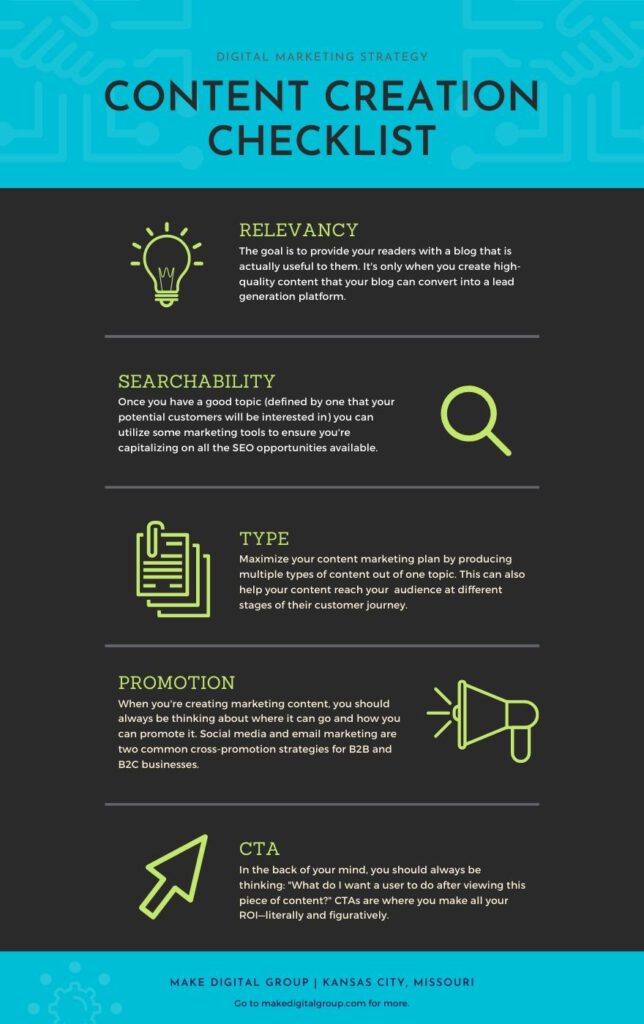So you want to start a blog, huh? That’s great. In fact, it’s an extremely useful and competitive way to reach your target audience—when it’s done correctly.
Unfortunately, all too often we see marketing teams and content creators trading in strategy and targeted marketing tactics for brain dumps of things that sound interesting to them.
This comes from the now-outdated idea that having more content is better than nothing. And while that may have been the case 15 years ago, search engines continue to get smarter and smarter and no longer consider an extensive blog presence to be a defining factor in searchability.
Today, search engines can read, rate and judge your content in the blink of an eye, knowing when you’re talking about relevant and useful topics and when you’re just posting yet another diary entry to your blog.
That’s where strategy comes in. Marketing teams of today can’t rely on simply posting tons of content and hoping that puts them on Google’s top 10 results. Now, you need to create a variety of different types of content, tailored specifically to your target audience that implements smart keyword research and can attract social shares.
Before you start
While that all sounds exciting, we need to set some ground rules first. Just creating content without a plan in place is what brought you to this blog in the first place.
Before you hit the ground running on a new and improved content marketing plan, you need to figure out a few things first…
Evaluate existing content
A content audit can give you valuable insights into what you’ve done in the past and clarify what has and hasn’t worked.
Sometimes, completing a content audit can be a frustrating experience because it points out a clear lack of strategy or focus.
Other times, you may find a long list of topics or posts that have the potential to be great content pieces with a bit of elbow grease.
Either way, knowing what’s in your back pocket is an insightful way to spend your time as a content marketer. When reviewing your current content scope, look for places where your audience may still have questions about your industry or services. Search for opportunities to transform basic blog content into more creative outputs, like podcasts or infographics.
Analyze content creation abilities
It’s extremely important that you understand what you’re able to create and what you’re not.
Depending on your marketing team, you may have all the resources you need to build out a massive content calendar, full of creative and unique types of content that cover the full gamut of digital marketing.
Other times, you might realize that your expertise falls under a few very specific formats and there’s no need to think too far outside that realm.
In general, the most common pieces of content that go into a digital content marketing strategy include:
- Somewhat easy:
- Blogs and articles
- Social media posts
- Email marketing
- More difficult:
- Infographics
- Case studies
- Video content
- Hard:
- E-books
- White papers
- Webinars
But before you can decide which of these you want to create, you need to understand who your target audience is and where they’re at in their customer journey.
Understand your target audience
Target audience is defined as who you want to read your content. It’s not a list of who is currently reading your blogs or articles, nor is it a giant wish list of “if only’s.” It’s a narrowed-down, thoughtfully articulated description of who you think best fits what you’re selling (in this case, what content you’re producing) as a business.
There are dozens of ways to nail down your target audience, some of which are more complicated and time-consuming than others. If you’re part of a scrappy marketing team, you might consider scouring social media, like LinkedIn or Facebook groups, to see what people in your niche are sharing and engaging with.
Ultimately, you’re looking to understand the demographics, shared pain points, preferred social media platforms, unique features and more of your potential customers so that you can create a better user experience for them and and a more streamlined workflow for your own internal team.
Define your marketing goals
One of the first questions we like to ask our clients is: “Why do you want to start a content marketing strategy?” Many times, it’s because they just know they’re supposed to. Sometimes, they drop more of the buzzwords we know and love like metrics and brand awareness and optimization.
Yet most of the time, they fail to miss the entire point of a content marketing strategy: to provide a target audience with a consistent, reliable stream of quality content that makes their lives easier.
When you consider usefulness as your top key performance indicator (KPI), you will automatically start to shift your approach to content without even meaning to. All of a sudden, your genius content idea doesn’t sound so good anymore. Or that really niche topic that has a good competition and keyword difficulty score on SEMrush doesn’t really seem like the best way to spend your time and efforts.
Content creation checklist
Once you’ve established your goals, audience and capabilities, it’s time to start creating content.
Every time you write a blog or create an infographic, you need to consider these five questions:
- How useful is my topic?
- What’s the SEO value of this topic?
- Where can I implement additional content approaches?
- How can I reach greater audiences past just my website?
- What do I want a user to do after reading this?
Relevancy
The first thing you need to do? Figure out what you want to talk about. One way to do this is to create a content calendar. Check out this blog for a full resource on this topic (and more!) to help you on this path.
Having an editorial calendar in place will ensure that when things are slow, you still have a topic in your back pocket that you can work with. That being said, it shouldn’t be the end-all-be-all of your content approach. An effective content marketing strategy dives into industry- and location-relevant topics, like new legislation, that an audience will be looking for.
Remember: The goal is to provide your readers with a blog that is actually useful to them. It’s only when you create high-quality content that your blog can convert into a lead generation platform. Basic blogs on overdone topics are just a waste of your content marketing efforts.
If you’re struggling to brainstorm top-tier topic ideas, this blog from Neil Patel is an excellent place to start.
Searchability
SEO is a key component of any good piece of content. Because really if someone can’t find the content, whether it’s a video or blog or social media post, what’s the point?
It’s important to remember that SEO is a long-play with digital marketing. Relevancy and usefulness continue to be extremely important in this category, which is why picking the right topic is more important than finding one that checks all the boxes on Hubspot or SEMrush for optimization.
But, once you have a good topic (defined by one that your potential customers will be interested in) you can utilize some marketing tools to find a specific angle or to make sure you’re capitalizing on all the SEO opportunities available to you.
Type
Maximize your content marketing plan by producing multiple types of content out of one topic.
For example, if you have a great content idea for a blog, write it. Blogs continue to be the most popular form of content marketing in today’s industry.
But you don’t have to stop there. Consider breaking your ideas up into more approachable chunks, like in infographics or short video content, to give users more ways to interact with the concept.
Not only can this help you do more with less work or conceptualization, it can also help your team reach your target audience at different stages of their customer journey with more tailored pieces of content.
Promotion
When you’re creating marketing content, you should always be thinking about where it can go and how you can promote it. Just posting on your blog feed isn’t going to garner you the reach you need to turn potential customers into conversions.
One of the most common ways to promote content is via social media. If you’re creating a B2B marketing plan, LinkedIn will likely be at the top of your list for platforms. If you’re B2C, email probably ranks as your top marketing strategy.
Whatever promotion plan you come up with, make sure it’s targeted toward where your customers are at in their journey and specific to your niche and industry.
CTAs
In the back of your mind, you should always be thinking: “What do I want a user to do after viewing this piece of content?” In some cases, it may make sense to implement a hyper-targeted call-to-action embedded within your content.
CTAs are where you make all your ROI—literally and figuratively. Whether you add one at the end of your blog, encouraging people to book a consultation with you, or implement some sort of sticky CTA plugin that stays with readers as they scroll your page, giving users something to do besides just interacting with your content provides your team with the opportunity to take your marketing strategy to the next level.
Like what you see? Download and save our checklist today:



